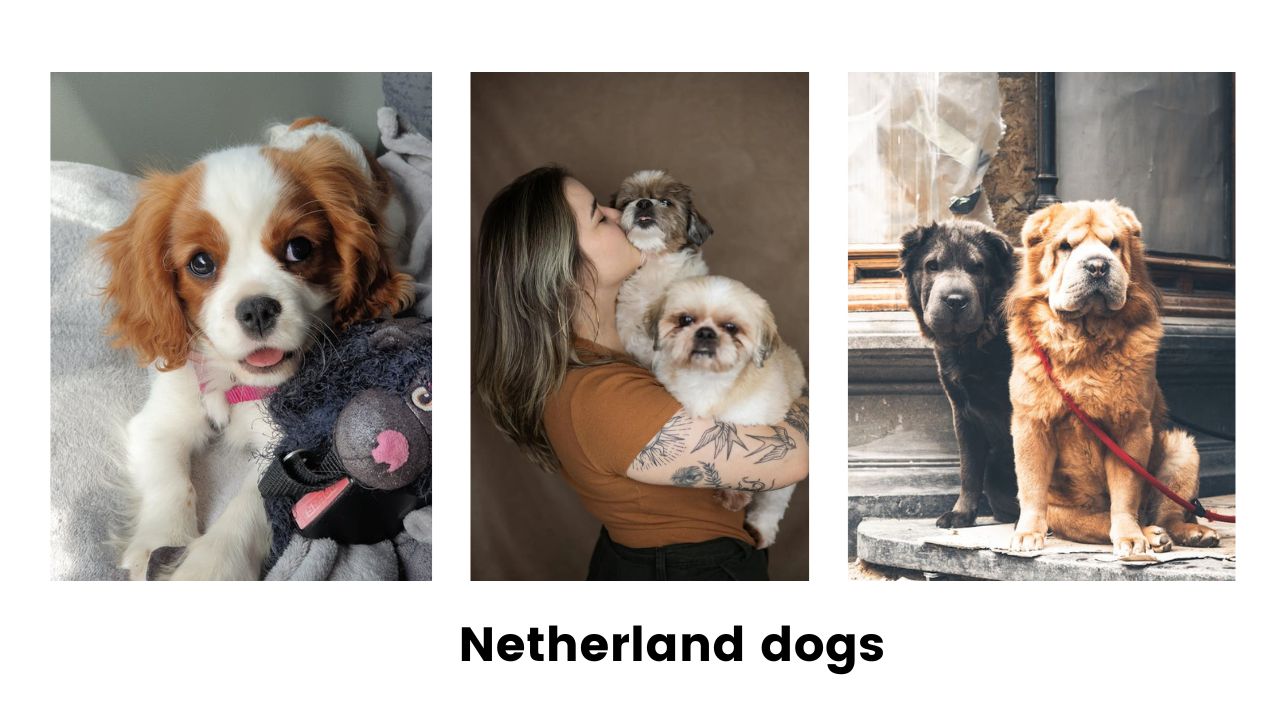In the picturesque landscapes of the Netherlands, street dogs have carved out a niche for themselves. Unlike many other countries where stray dogs face dire challenges, the street dog population in the Netherlands is often viewed with a mix of affection and concern. These dogs, known for their friendly demeanor and adaptability, have become a part of the urban fabric. They thrive in parks, streets, and neighborhoods, often forming bonds with local residents who provide them with food and companionship.The culture surrounding street dogs in the Netherlands emphasizes compassion and care. Many organizations work tirelessly to ensure these dogs are treated humanely, promoting spaying and neutering programs to control the population. This unique approach has led to a relatively healthy and well-adjusted community of street dogs that reflect the values of Dutch society.
List of Dog Breeds Found in the Netherlands
The Netherlands is home to several dog breeds that are well-suited for both companionship and work. Here’s a look at some of the most notable breeds:
- Dutch Shepherd: Known for their intelligence and versatility, Dutch Shepherds are excellent working dogs. They are often used in police work and search-and-rescue operations due to their keen sense of smell and strong drive.
- Friesian Water Dog: This breed is characterized by its curly coat and strong swimming ability. Friesian Water Dogs are known for their friendly nature and make great family pets.
- Kooikerhondje: A small spaniel-like breed, Kooikerhondjes were originally bred as duck decoys. They are energetic, playful, and love being around people.
- Drentse Patrijshond: This breed is an excellent hunting dog with a gentle disposition. Drentse Patrijshonds are known for their loyalty and make wonderful companions.
- Belgian Malinois: Although originally from Belgium, this breed is popular in the Netherlands as well. Known for their intelligence and agility, Belgian Malinois excel in various dog sports and as working dogs.
- Dutch Smoushond: A rare breed that resembles a small terrier, Dutch Smoushonds are affectionate and great with children. They have a distinctive wiry coat that adds to their charm.
These breeds not only contribute to the rich canine culture in the Netherlands but also reflect the country’s commitment to responsible breeding practices.
Genetic Background of Netherland Street Dogs
The genetic background of Netherland street dogs is fascinating. Most street dogs in this region can trace their lineage back to ancient domesticated breeds that have evolved over centuries. Their ancestors likely include various working breeds that were brought to Europe by traders and travelers. These street dogs exhibit a blend of physical traits inherited from their diverse ancestry. You might notice variations in size, coat type, and color among them. Unlike purebred dogs that often have specific physical standards, street dogs showcase a unique mix that reflects their adaptability to various environments. Behaviorally, Netherland street dogs tend to be social animals with strong survival instincts. They often form packs for safety and companionship, displaying behaviors that demonstrate their intelligence and resourcefulness in urban settings.
Behavioral Studies of All Breeds of Netherland Street Dogs
Research into the behavior of Netherland street dogs reveals much about how they navigate urban life. Studies have shown that these dogs develop complex social structures within their communities. They often form packs that help them find food, protect one another from dangers, and raise puppies together. Mating strategies among street dogs also reflect their adaptability. They tend to mate based on social bonds rather than solely on instinctual drives. This behavior can lead to more stable pack dynamics, ensuring that puppies are raised in supportive environments. Moreover, studies indicate that street dogs possess remarkable problem-solving skills. They learn quickly how to navigate human environments—whether it’s finding food near restaurants or avoiding busy streets—demonstrating both intelligence and adaptability.
What is a Netherland Street Dog Breed?
A Netherland street dog isn’t classified under a specific breed but rather represents a diverse group of mixed-breed canines living in urban areas across the country. These dogs come from various backgrounds but share common traits such as resilience, adaptability, and sociability.Street dogs often display a range of physical characteristics due to their mixed heritage—some may be small with short coats while others might be larger with fluffy fur. Their personalities can vary widely; some are shy while others are outgoing and friendly.The term “Netherland street dog” embodies not just a physical appearance but also an attitude towards life—these dogs are survivors who thrive amidst challenges while bringing joy to those around them.
Questions Mostly Asked About Street Dogs
- Are street dogs safe to approach?
- Generally, most street dogs are friendly; however, it’s important to approach them calmly as some may be wary of strangers.
- What should I do if I find an injured street dog?
- Contact local animal welfare organizations or veterinarians who can provide assistance or take the dog into care.
- How can I help street dogs in my community?
- You can volunteer at local shelters, donate food or supplies, or support spaying/neutering initiatives.
- Do street dogs make good pets?
- Yes! Many street dogs adapt well to home life once they receive proper training and socialization.
- What health issues do street dogs face?
- Common health problems include parasites, skin infections, and dental issues due to lack of regular veterinary care.
- Can I adopt a street dog?
- Absolutely! Many organizations facilitate adoptions for street dogs looking for loving homes.
- How do I train a street dog?
- Use positive reinforcement techniques such as treats and praise; patience is key as they may need time to adjust.
Common Health Problems Faced by Netherland Street Dogs
While many Netherland street dogs enjoy good health due to community support systems, they still face several common health issues:
- Parasites: Fleas, ticks, and worms can be prevalent among stray populations due to limited access to veterinary care.
- Skin Conditions: Allergies or infections can occur from exposure to environmental factors or poor nutrition.
- Dental Issues: Lack of proper dental care often leads to periodontal disease among these dogs.
- Obesity: Some street dogs may become overweight if they rely on human handouts without adequate exercise.
- Infectious Diseases: Without vaccinations, they may be susceptible to diseases like parvovirus or distemper.
Regular check-ups from veterinarians can help mitigate these issues significantly while ensuring these lovable companions lead healthy lives.
Legal Framework and Animal Rights for Netherland Street Dogs
The Netherlands has progressive animal welfare laws aimed at protecting all animals, including street dogs. The Animal Welfare Act ensures that animals receive proper care regardless of whether they have an owner or not. Key aspects include:
- Protection Against Cruelty: Laws prohibit abuse or neglect towards any animal.
- Spaying/Neutering Initiatives: Many municipalities promote spaying/neutering programs aimed at controlling stray populations humanely.
- Adoption Programs: Local shelters often run adoption campaigns encouraging residents to adopt rather than shop for pets.
- Public Awareness Campaigns: Organizations work tirelessly to educate the public about responsible pet ownership and the importance of caring for stray animals.
These measures reflect society’s commitment to treating all animals with respect while fostering an environment where both pets and people thrive together.
Conclusion
As we wrap up our exploration into the world of Netherland street dogs, it’s clear these remarkable creatures embody resilience and charm. Their stories remind us of the importance of compassion towards all living beings—whether they have homes or roam freely in our neighborhoods. By understanding their backgrounds, behaviors, and needs better, we can create supportive communities where both humans and animals coexist harmoniously. Whether through volunteering at local shelters or simply offering kindness when we encounter them on our streets, we all have a role in celebrating our furry friends’ lives. Let’s continue advocating for these lovable companions so they receive the love they deserve! If you’re inspired by what you’ve read today or want more information on how you can help improve the lives of street dogs in your area—consider signing up for our newsletter or checking out our other articles focused on animal welfare! Together we can make a difference!







